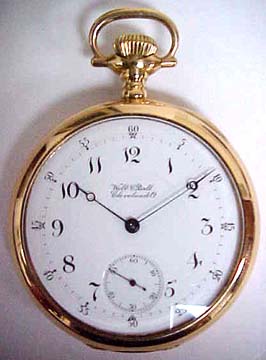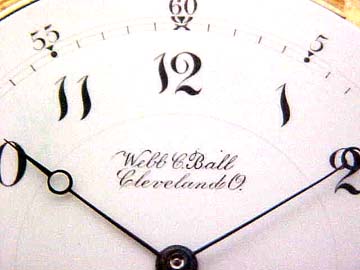
| WWT Shows | CLICK TO: Join and Support Internet Horology Club 185™ | IHC185™ Forums |

|
• Check Out Our... • • TWO Book Offer! • |
Welcome Aboard IHC185™  Internet Horology Club 185
Internet Horology Club 185  IHC185™ Discussion Site Main Page
IHC185™ Discussion Site Main Page  Horological Discussions, Questions and Answers
Horological Discussions, Questions and Answers  European Pocket Watch Forum
European Pocket Watch Forum  Ball by Vacheron & Constantin - Your Input Please
Ball by Vacheron & Constantin - Your Input Please
 Internet Horology Club 185
Internet Horology Club 185  IHC185™ Discussion Site Main Page
IHC185™ Discussion Site Main Page  Horological Discussions, Questions and Answers
Horological Discussions, Questions and Answers  European Pocket Watch Forum
European Pocket Watch Forum  Ball by Vacheron & Constantin - Your Input Please
Ball by Vacheron & Constantin - Your Input PleasePage 1 2
Go  | New Topic  | Find-Or-Search  | Notify  | Tools  | Reply to Post  |  |
Hi All, I just acquired this 16s open face piece, maybe spending too much, and have absolutely no knowledge of vintage pieces produced by Vacheron and Constantin. Sadly, it does not have its original case. I assume it would have been at least a 14K case and I will be on the lookout for one. The dial also shows some minor hairline damage, as well as, flea bite at the 58 second marker. I do not know the location yet of the dial feet and wonder if any other Ball dials would work on this piece? I assume this is a 15 jewel movement as the hunter version noted in Cooksey's pg. 158 is 15 jewels. The watch is running very well keeping excellent time but I'm sure a good service is always in order. Check out the wolf teeth winding. Thanks, Joe | |||
|
Another dial side picture. | ||||
|
Picture of movement. | ||||
|
Another picture of movement. | ||||
|
Last picture of movement. Joseph W. Robinson | ||||
|
| IHC President Life Member |
This is most likely 16-Jewel, perhaps 17 but unlikely. By the way Joe, you may find that dial is not original to the Ball-V&C movement. Having "Ball" above the "ORRS" signature began in the 1920s which is considerably later than these watches. It will be interesting to see how the dial is attached as it may be improper or it could possibly turn out to be a later replacement dial intended for use on this early movement. Even if it has a deficiency or two this is still a really great watch. Thanks a million for sharing it with us! Lindell | |||
|
Lindell, Thanks for the input. Keep it coming. I'll pull the dial tomorrow to confirm either 16 or 17 jewels and how/where the dial is attached. Can you give me an approximate date od manufacture? Thanks, Joe | ||||
|
For relative dating purposes, I have seen a Vacheron & Constantin watch in the 300-thousand serial number range with an 1896 inscription, so yours would be a little earlier. Here is a picture I snagged of an original dial on one of these V&C for Ball (#290978).  | ||||
|
Hi Jerry, Thank you. The wording on the dial is difficult to make out. Does is say "Webb C. Ball" and Cleveland O."? I think that dial is more classy than the typical Boxcar style. Also see from your picture that the piece has the narrow "Moon" style hands. Are they manufacturers' standard? The case appears to be early Ball with antique bow. Do you know if the case is solid gold and its content? By your dating estimate my S/N 287130 could put manufacture circa 1893 - 1895? That would make it one of the earliest made Ball watches along with Hamilton, Howard, and Hampden, as I think Ball started selling RR grade c1893? Thanks, Joe | ||||
|
Here is the detail of the dial from the auction a couple of years ago. Other than saving the pictures I do not have any details.  | ||||
|
Ah... Found a link right here on 185. See https://ihc185.infopop.cc/eve/forums/a/tpc/f/5656047761/m/6181053691 here is a Ball by V&C owned by Joel Sarich S/N 290885 hunter style in 14K case with spade style hands. Listed under "Timekeepers Photo Gallery". This gives me some more direction. Thanks for your post Joel. Joseph W. Robinson | ||||
|
What a neat and fascinating early Ball. I'll stay tuned for more on this one... | ||||
|
Hi Joe: You're very welcome! Congraatulations on acquiring a rare Ball watch. I will also be interested in what you find when you pull the dial, both from the jewel count to the originality of the dial. I've seen a few of these, and all had the dial that is on my watch. The examples I have seen have been cased in 14K, and silver cases all marked Webb C. Ball. Also, see the 2007 "Complete Price Guide to Watches," Pg, 158 for some additional information. The picture, on the upper right, is my watch taken for an early edition of the book. Joel | ||||
|
Thanks for all the input so far. Jeff, your note above says V&C and ORRS... What does that mean? Have removed the movement from the case and removed the hands. Alas! There are no dial holding screws around the perimeter to release the dial. It appears to be held on with 2 little dabs of clear glue or epoxy. One at the 1:00 and the other at the 6:00. Joe | ||||
|
| IHC President Life Member |
The "V&C" that Jerry, Jeff and I all referred to is of course short for the Vacheron & Constantin name. Vacheron & Constantin actually made the movement under contract to Webb C. Ball of Cleveland, Ohio. The "ORRS" is short for "Official Rail Road Standard" a name registered to Ball and Company and that was apparently first used in 1895 on Ball-Hamilton watch movements. As I cautioned above... "you may find that dial is not original to the Ball-V&C movement" ...and you found it is not. Your image with bezel off revealed the dial was slightly off-center and having the "BALL" above the "Official RR Standard" and other markings make your dial a 1920s item. That's why I said... "It will be interesting to see how the dial is attached as it may be improper or it could possibly turn out to be a later replacement dial intended for use on this early movement." The 1:00 and 7:00 may approximate the proper dial attachment locations, perhaps you could show us a picture of your pillar plate, which is the dial-side of the movement. That would help figure this out and answer the jeweling question as well. Sorry about the disappointment. | |||
|
All, Okay, I got the dial off without as much trouble as I expected. Will post a few shots of the movement dial side up. The last is the backside of the POS dial. Dial feet locations (before being ground off) are 22.5, 38, 57.5 and is Hamilton? There is still some residue glue(?) on the movement. Needless to say I knew the case was not original and indeed the dial is "somebody's" add on. Hopefully with Lindell's assistance and help from others I will be able to find a suitable, period correct dial and 14K case. After lengthly discussion with Lindell it appears the piece was manufactured circa early to mid 1890s way before the BALL ORRS trademark on my dial was first marketed (around 1925). So if anyone has a period correct solid gold 16s OF case (silver will definately be considered) and/or dial they are willing to sell please let me know. Thanks for all your help! | ||||
|
Pic 2 Joseph W. Robinson | ||||
|
Back side of dial. Joseph W. Robinson | ||||
|
| IHC Life Member RR Watch Expert |
V&C used a unique means of attaching the dial to the movement. They used two copper dial pins soldered to the underside of the dial which were hollow and threaded down into the pins in the long direction. These pins went through the pillar plate and were held to it by screws that were screwed into the hollow pins and snugged up against the pillar plate from the inside. You can clearly see the two empty holes in your pillar plate where the original dial pins would go. Ed Ueberall IHC Member 34 The Escapement | |||
|
| IHC Life Member RR Watch Expert |
Joseph, You and I were typing at the same time. I am assuming that your movement fits a standard American size case. If so, remember that many (if not most) of the V&C movements sold in the US and Canada were housed in American made, rather than V&C or Swiss made cases. There was a large savings in import duties when movements were imported uncased. A number of different casemakers were used, but the most common casemaker that I have seen for V&C and other very high grade Swiss movements was Jeannot & Shiebler, who were located in New York City around the end of the 19th Century. Their case symbol was an "J" superimposed over an "S". To find a "correct" V&C dial, carefully measure the center to center distance between the two dial pin holes in the pillar plate. I have learned (Don't ask BTW, you didn't show the dial side of the pillar plate with the cannon pinion removed, but I would guess that the lower center wheel pivot is NOT jeweled, making your movement a 16 jewel. Its great to see that the Geneva Stopwork on your watch is still intact. Many American watchmakers didn't like them and took the parts out and threw them away when they serviced the watch. Ed Ueberall IHC Member 34 The Escapement | |||
|
Hi Ed, Thank you for sharing. And from your explanations, I now know how the V&C dial is attached to the movement. The centerline to centerline distance between the two mounting holes is 32.5mm. And yes this is a 16s open face movement that is currently mounted in a Philadelphia silveroid case. Lindell advises that "Ed Ueberall is the man" when it comes to V&C so any addition help with this piece would be greatly appreciated in bringing it back as close to original as poosible. Joseph W. Robinson | ||||
|
| IHC Member 660 |
As Ed describes, one usually sees two dial screws inserted from the movement side of the pillar plate, but they are not universal. The screw heads typically stand proud of the plate, so are readily visible. Noting Joel Sarich's V&C Ball, it also appears to have no dial screws. These may have used snap-on dials, which unfortunately are not available from the Snap-On Tool Co. | |||
|
| Powered by Social Strata | Page 1 2 |
| Your request is being processed... |
|
Welcome Aboard IHC185™  Internet Horology Club 185
Internet Horology Club 185  IHC185™ Discussion Site Main Page
IHC185™ Discussion Site Main Page  Horological Discussions, Questions and Answers
Horological Discussions, Questions and Answers  European Pocket Watch Forum
European Pocket Watch Forum  Ball by Vacheron & Constantin - Your Input Please
Ball by Vacheron & Constantin - Your Input Please
 Internet Horology Club 185
Internet Horology Club 185  IHC185™ Discussion Site Main Page
IHC185™ Discussion Site Main Page  Horological Discussions, Questions and Answers
Horological Discussions, Questions and Answers  European Pocket Watch Forum
European Pocket Watch Forum  Ball by Vacheron & Constantin - Your Input Please
Ball by Vacheron & Constantin - Your Input Please©2002-2025 Internet Horology Club 185™ - Lindell V. Riddle President - All Rights Reserved Worldwide

